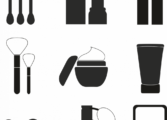Serum vs plasma: En grundlig genomgång för matentusiaster

Serum vs plasma – En djupgående jämförelse för matentusiaster
Introduction
Serum and plasma are terms commonly used in the medical field, but their importance extends beyond the realm of healthcare. Understanding the differences between serum and plasma can provide valuable insights into the culinary world. In this article, we will delve into the nuanced disparities between these two components, exploring their characteristics, uses, and historical significance. So, join us as we explore the fascinating world of serum and plasma.
Vad är serum och plasma?

SERUM
Serum, defined as the fluid portion of blood obtained after coagulation, plays a crucial role in cooking. It is obtained by removing fibrinogen and other clotting factors from plasma. In simpler terms, serum is the clear, pale yellow liquid remaining after blood has clotted. Due to its lack of clotting factors, serum has a distinct advantage in certain culinary applications.
PLASMA
On the other hand, plasma refers to the liquid component of blood obtained by preventing the clotting process. It is the liquid portion of blood that retains clotting factors and is widely recognized in medical science. Plasma is typically straw-colored and serves as a carrier for red and white blood cells, platelets, and other vital components. Its unique composition makes it indispensable for certain culinary preparations.
Vilka typer av serum och plasma finns det?
SERUM
When it comes to serums, there is a wide range of options available, each catering to specific culinary needs. Let’s take a closer look at some popular types:
1. Animal Serum: Derived from various animals such as beef, chicken, and fish, animal serums offer distinct flavors and textures to dishes. These serums are commonly used in soups, stews, and marinades, infusing rich flavors into the recipe.
2. Vegetable Serum: For those seeking plant-based alternatives, vegetable serums provide an excellent option. Extracted from vegetables like mushrooms, tomato, and soy, these serums offer flavor enhancement while aligning with vegetarian and vegan dietary preferences.
PLASMA
Similarly, different types of plasma exist, each possessing unique properties and applications:
1. Fresh Frozen Plasma (FFP): Obtained from a donation of whole blood, FFP contains all the coagulation factors present in the donor’s blood. It is commonly used in the medical field but has limited culinary applications due to the presence of clotting factors.
2. Platelet-Rich Plasma (PRP): This type of plasma contains a high concentration of platelets, which are crucial for healing and cell growth. While primarily utilized in medical procedures, PRP has emerged as an interesting ingredient in avant-garde cuisine, adding a unique texture and flavor to dishes.
Kvantitativa mätningar om serum och plasma
Quantitative measurements play a fundamental role in understanding the differences between serum and plasma. By examining certain key parameters, we can further appreciate how these components differ:
– Protein Content: Serum typically contains a higher concentration of proteins compared to plasma. This attribute is essential in cooking, as proteins contribute to flavor, texture, and nutritional value.
– Clotting Factors: Plasma is rich in clotting factors, such as fibrinogen, whereas serum lacks these components due to the coagulation process. Understanding the clotting properties can impact the selection and preparation of both serum and plasma for culinary purposes.
– Lipids: Serum often contains higher levels of lipids compared to plasma. These lipids contribute to the mouthfeel of dishes, adding a luxurious sensation when consumed.
Hur skiljer sig serum och plasma från varandra?
The contrasting characteristics of serum and plasma significantly impact their applications in the culinary realm. Let’s explore some notable differences:
1. Culinary Uses: Serum, with its absence of clotting factors, is favored in recipes that require a clear liquid, such as consommés, sauces, and broths. On the other hand, plasma-based dishes, with their coagulation properties, make excellent bases for custards, puddings, and certain desserts.
2. Flavors and Textures: Due to the protein content and lipid levels, serum adds richness and depth of flavor to dishes. It also contributes to a smoother texture, enhancing the overall gastronomic experience. Plasma, with its clotting factors, can create a gelatinous consistency in dishes, lending a unique mouthfeel.
3. Nutritional Value: While both serum and plasma provide nutritional benefits, they differ in content. Serum, rich in proteins and lipids, offers a higher calorie density compared to plasma. Chefs and home cooks can leverage these variations to meet specific dietary requirements or enhance the nutritional profile of their creations.
En historisk genomgång av för- och nackdelar med serum och plasma
The historical significance of serum and plasma cannot be overlooked when discussing their advantages and disadvantages. Let’s examine the evolution of these components in culinary applications:
1. Serum: Historically, serum has been primarily used for its preserving properties, facilitating the creation of cultured dairy products like yogurt and cheese. However, the versatility of serum has expanded over time to include its incorporation in various dishes for flavor enhancement and unique textures.
2. Plasma: While plasma’s culinary history is less well-documented, its gelatinous properties have been exploited to create innovative dishes. Ancient culinary practices often relied on coagulated plasma as a binding agent, ensuring the success of traditional desserts and puddings.
Conclusion
In conclusion, serum and plasma offer distinct characteristics and applications in the culinary world. Understanding their differences, quantifiable measurements, and historical significance enables chefs and home cooks to harness the full potential of these components. Whether utilizing the richness of serum or the coagulation properties of plasma, incorporating these elements into recipes can elevate flavor profiles and create unforgettable dining experiences. So, embrace the world of serum and plasma, and ignite your culinary creativity.
















































